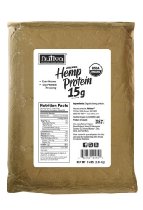Hemp Textile Uses
1For thousands of years, hemp fiber has been used for many industrial applications. This is because it offers the strongest and longest natural fiber known to mankind. Industrial hemp has been used for decades as the main fiber in the production of textiles such as apparel, clothing, rugs, shoes, upholstery and hats. This is mainly because hemp fibers are more absorbent, durable, softer, and warmer than cotton and other types of fabric available today. Because of its flexible and versatile nature, hemp can be blended with other kinds of fiber such as silk and cotton. There are many other benefits of using hemp for textile use:
Fast growth
Hemp grows and matures extremely fast than cotton that mostly takes a whole season before being ready for harvest. Farmers who cultivate hemp therefore benefit from faster yields and greater profits due to the plant’s fast growth.
Weather resistant
Because of its hardness and weather-resistant nature, hemp can be cultivated almost anywhere in the world. Whether they are planted on the grasslands, lowlands or mountainsides, they will thrive and produce the expected yield.
Mold and insect resistant
Hemp is naturally resistant to fungus and insects. As such, it does not require any pesticides during its cultivation like cotton, which is a very delicate plant that needs tons of insecticides and pesticides for it to effectively grow. This makes the cultivation of hemp a cost-effective venture for any farmer.
No herbicides/pesticides required
Hemp naturally restrains or suppresses weed growth. This is because it quickly grows to a height of 5 meters resulting in dense foliage that blocks the growth of weeds. As such, herbicides are not required during their planting, thus further alleviating the ecological problems associated with chemical planting of fibers.
Requires little to no irrigation
Unlike cotton that requires a lot of water during its growth, hemp can quickly grow and mature with little to no irrigation. Hemp has deep tap roots that enable it to reach and make use of deep subsoil water.
Blocks UV rays
Textile hemp also blocks 50 percent more ultra violet rays than cotton. Even if only 50% hemp is used in a textile product, it is still able to offer the same level of blockage to UV rays.

 Dr. Bronner's Magic Soaps Pure-Castile Soap
Dr. Bronner's Magic Soaps Pure-Castile Soap Nutiva Organic Hemp Protein
Nutiva Organic Hemp Protein
Comments
Trackbacks
Check out what others are saying about this post.[…] – the many benefits and uses of hemp, many uses for […]